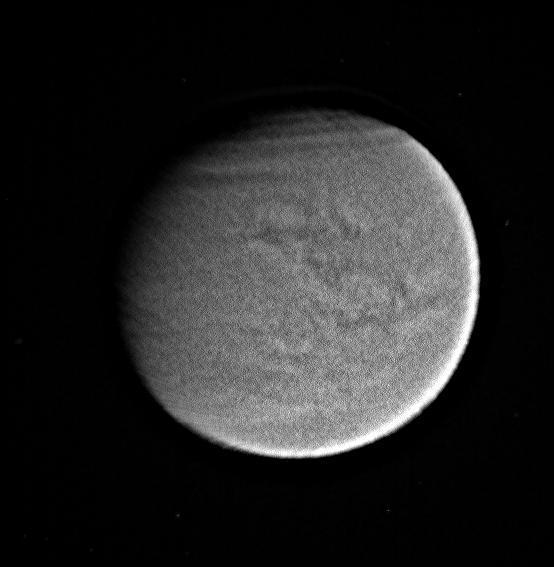t00fri wrote:Come on...
I cited above directly from NASA, part of the original caption from their latest Cassini photo (EVERYONE reading here knows where the corresponding site is!):
Since every child knows that 938 nanometers is near-IR, /invisible to the eye/, you clearly did not read or not understand that NASA caption I quoted. Now you are trying to get out of it by your familiar rhetorics...
Find me a "child" who knows that 938nm is near-IR. Go on. I'd bet that most people here don't know off the top of their heads what the wavelengths of EM radiation are that correspond to near IR, or green light, or blue, or UV.
Jeez. And you wonder why I get annoyed at your posts, Fridger. And then you have the gall to claim I'm out to get you.
Like I said, would it kill you to post the URL? Evidently it would, since you still refuse to do it. You're just being deliberately obstructive, and again you are showing your typical attitude of not admitting that you are in the wrong.
You always assume that people know everything. Most of your explanatory posts say "of course", or "obviously". No, Fridger, what you are talking about is not obvious, and I for one find it annoying as hell that you assume that it is. That kind of "explanation" is incredibly patronising and makes readers think that they must be idiots for not knowing what you're talking about - it's counterproductive and unecessary. It is
not clear for all here to see. Another example was the "Light Crazy" thread where you were "explaining" cosmology like you were giving a university lecture - throwing around numbers and greek letters like confetti that would be completely meaningless to most people and liberally sprinkling it with "of course' and "it should be obvious" and so on.
Get the damn point, Fridger - you need to be a hell of a lot clearer with your explanations here. This isn't a forum full of astrophysics lecturers or people that have spent their whole lives studying astronomy - it's full of ordinary people from all walks of life who may not have that advanced knowledge that you assume that they have.
Frankly, the fact that you can't even deign to provide the right web address shows you really have an attitude problem here. I for one have looked on the Cassini homepage, the CICLOPS homepage, and the NASA.gov home page and not found this image. "NASA" is comprised of a hell of a lot of websites and this is not on the obvious ones - if you want to explain things, you should not expect the reader to do the detective work to find out what the hell you're talking about (and that means you need to cite your sources so that people can look them up).
Is that perhaps clear enough for you?
As it is, I found the image at:
http://saturn.jpl.nasa.gov/multimedia/i ... ageID=1378It is. for some reason, not on the Cassini homepage where the latest press releases usually are, despite being released today. The full caption is:
Titan's surface and atmospheric features are shown here in this processed, visible-light image taken by Cassini.
Cassini's visible-light spectral filter is sensitive to a broad range of light, from ultraviolet to near-infrared. Imaging scientists normally use a narrow-band filter centered at 938 nanometers to look at Titan's surface and cloud features (see
http://photojournal.jpl.nasa.gov/catalog/PIA06154). Most images of Titan taken between flybys are in visible light and are used to navigate the spacecraft. Views like these demonstrate that the surface, as well atmospheric features (such as the haze banding seen near the northern limb of Titan), can indeed be seen through this filter.
Although the clear filter is not the best way to view the surface, this observation demonstrates that with sufficient processing, this filter can be used to keep track of cloud features during periods between flybys in order to provide a better understanding of the evolution of Titan's atmosphere as the moon nears spring in the northern hemisphere.
This image was taken with the Cassini spacecraft narrow angle camera on Feb. 10, 2004 from a distance of 2.5 million kilometers (1.6 million miles). The image scale is 15 kilometers (9.5 miles) per pixel. The image was strongly enhanced to bring out surface features. Features on the eastern side of this image will be observed at 20 times this resolution during a flyby in late March.
As you can see, you neglected to mention that the caption says that the image was strongly enhanced, and only talks about being able to track atmospheric features with this method. It certainly does not even remotely prove that you can see the sun from the surface of Titan - you'll need a lot more evidence than that to be convincing in your argument.

